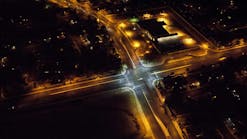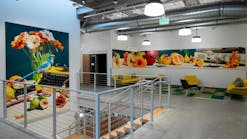The Alliance for Solid-State Illumination Systems and Technologies (ASSIST) has published a new volume in its “ASSIST recommends” series, “Outdoor Lighting: Visual Efficacy.”
The volume, developed through previous research by the Lighting Research Center (LRC) at Rensselaer Polytechnic Institute, describes a unified system of photometry that characterizes the often tricky photometric performance of light sources under nighttime applications.
How humans see
The human visual system uses two types of photoreceptors, cones and rods, found in the retina. Cones are used to process visual information under daytime or “photopic” light levels, while rods work under completely dark “scotopic” conditions.
There is, however, a range of light levels called “mesopic,” where both cones and rods together provide input to the visual system. Mesopic light levels are typically found outdoors at night, where streetlights, cars, and buildings all contribute to the total light level.
Since commercial photometry is based entirely upon the photopic or daytime luminous efficiency function, it may misestimate the effectiveness of some light sources used at night, says LRC Director Mark Rea, Ph.D., one of the authors of the “ASSIST recommends” volume.
A unified photometric system
The proposed unified system of photometry integrates both the scotopic and photopic luminous efficiency functions into a complete system that can be used across the entire range of light levels available to the human visual system. The system differentially weights the two efficiency functions depending upon light level.
“In effect, it is a system for choosing among commercially available light sources to deliver the same unified, rather than photopic, photometric quantity,” says Rea.
Calculating unified luminance
The ASSIST publication provides step-by-step instructions for calculating the unified luminance of a given light source based on light level and the scotopic-to-photopic ratio of the light source.
Different combinations of light sources and light levels may produce the same unified luminance, which indicates photometric equivalency. Therefore, the system can serve as a simple method for trading off light sources and light levels under mesopic conditions, and thereby aid in the selection of light sources for a given application.
How ASSIST works
ASSIST is a collaboration between researchers, manufacturers, and government organizations. Its goal is to identify and reduce major technical hurdles currently facing solid-state lighting.
The “ASSIST recommends” program provide a set of formal recommendations to the LED and lighting communities about issues important for the reliable performance of LED lighting and its comparison to other light source technologies.




